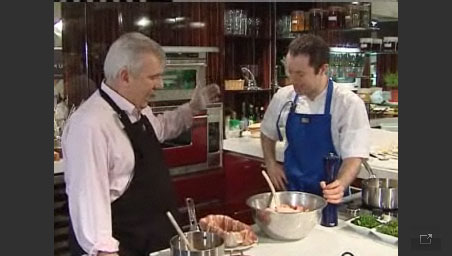by John Daly
 How a dash of whiskey helped us win France’s gold medal for black pudding
How a dash of whiskey helped us win France’s gold medal for black pudding
If revenge is a dish best taken cold, it’s been worth the wait to put one over on the French. After the disenchantment of Thierry Henry’s “hand of fate” the nation can finally take a degree of vengeance having nabbed a gold medal from under the noses of the gauls.
Jack and Tim McCarthy of McCarthy’s Butchers in Kanturk were last week crowned members of the “Brotherhood of the Knights of the Black Pudding” – a distinction won in the face of intense competition from 4,000 entrants from across Europe, at La Confrerie des Chevaliers du Goute Boudin, a festival devoted to the joys of superior black pudding held each year in the Normandy Town of Mortagne au Perche.
“Last year was a tester for us, a way to suss out the opposition and find out what was required.” explains the affable Jack, a man who the epicurean delights of dried pig’s blood have made the toast of the international black pudding fraternity.
“Like Franz Beckenhauer said years ago, “I may not be the fastest man from A to B but I don’t always start at A.” There are ways around these things”, he declares with a cheeky wink.
“Seriously though, it was really about making the pudding in a contemporary style, but still maintaining the integrity.”
To those of us whose only familiarity with the joys of blood sausage is the Saturday morning fry up, the standard on display at this annual pudding face-off in Normandy is light years above and beyond the factory made product found in your local supermarket.
“This gathering at Montagne au Perche is really the best of the best,” says Jack. “It’s a place where the French truly genuflect at a tradition that dates back centuries. And while we might question their attitude to fair play in soccer, there’s no doubting the high esteem they hold their food in.”
During the week long festival, gastronomic stalls dot the town squares, whilst specialist butchers demonstrate the art and mysteries of sublime black pudding creation. Up to 10km of the delicacy is consumed by the eager multitudes during the week, and prizes are awarded for Best Black Pudding Eater and Best Pig Squeal.
In France, boudin noir varies from region to region but generally has apples, onions and mashed potatoes as a filler. “We found the reception to our product extremely good out there,” says Jack. “They have even indicated they would like to bring the competition to Ireland, which would be enormous and we are encouraging them in that direction.”
With a history dating back to ancient Rome, Black Pudding has its variations across the world from the Netherlands’ bloedworst to Italy’s buristo and Finland’s mustamakkara. Even South America has its moreilla, where the blood is mixed with rice and spices.
“Black Pudding really began as a survival food around the world, and is a very different creature tot eh so-called fancy cuisine we’ve been putting up with in recent years,” the Kanturk man explains.
“It came from the times when waste was not an option, when all parts of the animal had a nutritious use. Nowadays, wer’re throwing away half the animal – and we wonder why things are the way they are.”
As Ireland digs deep to cope with the new economic reality, a return to old traditions is on the cards. “We’ll have to reinvent ourselves and learn again how to survive again,” says Jack.
“We have dispensed with the techniques and methods of producing local foods, and it’s got to the stage where more is put into the packaging than the product itself and us Irish have some of the best traditions in the world but we don’t seem to realise what an incredible resource is lying under our noses.”
The McCarthy business began in 1892, when Jack’s ancestor, Callaghan McCarthy, an accomplished local baker in Kanturk, got a poor cut in his local butcher’s and saw a niche in the market.
Deciding to change career, he put away his dough hook and replaced it with a set of butchers’ knives.
In a business that has straddled three centuries and adapted to the changing tastes of each era, McCarthy’s example of commercial survival and independence presents a miniature image of where the nation as a whole might go.
“We need to learn how to sell what we have to the world, and our food is top of that list,” he believes. “A golfer, for example, will come to Ireland and venture on the course once a day – but he has to eat three times a day.
“I often look in restaurant windows on my travels around the country, and I remember well the day I saw ads for American-style rins in one place, Mediterranean – style prawns in another and Cajun-style chicken in a third. In the name of God, where is Ireland in all this? Have we forgotten what we have to sell here?”
Ireland needs a serious wake-up call, he says, to focus on the goods the world wants are part of our plan to survive the economic cataclysm.
“We need to nurse our own culture, and aren’t black pudding, brown bread and full salted butter all intrinsic parts of that?” he asks.
But while the world has a proven appetite for all things Irish, much of our economic renaissance will rest on the quality of salesmanship employed to push the product, he feels.
“I travel all over the world to trade fairs with Good Food Ireland and I see some poor creatures on stalls who wouldn’t be able to sell ince-cream in the desert. You can have the best product in the world but you still need to know how to sell it.”
So what’s the McCarthy secret? Well on top of the traditional curing techniques, innovative spice combinations, and delicious smokes and Irish Whiskey employed to impart unique flavours and tenderness to their wide range of products, the McCarthys’ emphasise their free range pigs as a fundamental ingredient in their success.
“There should be nothing unusual in seeing pigs digging for roots in open fields,” Jack says, pointing to the nearby pasture where dozens of contented porkers happily snort.
“Sadly, scenes like this are a rare occurrence for the majority of pigs farmed intensively. Our pigs enjoy wide open spaces to dig and play in the open air, to exercise and maintain a natural diet. The good life they lead is the essential ingredient that makes our puddings what they are,” he says with obvious pride.
Before returning to attend the steady stream of customers in his shop who have come in search of today’s delicacy, Jack McCarthy finishes with another sporting reference.
“When Cork win the All Ireland this year, we’ll make the finest black pudding ever seen in these parts,” he promises, “Now that will be something special.”
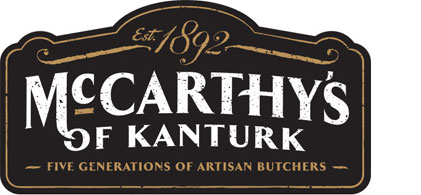

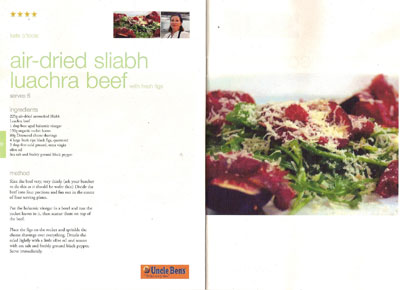 Having been thrilled with Kate O’Toole using McCarthy’s fabulous
Having been thrilled with Kate O’Toole using McCarthy’s fabulous 
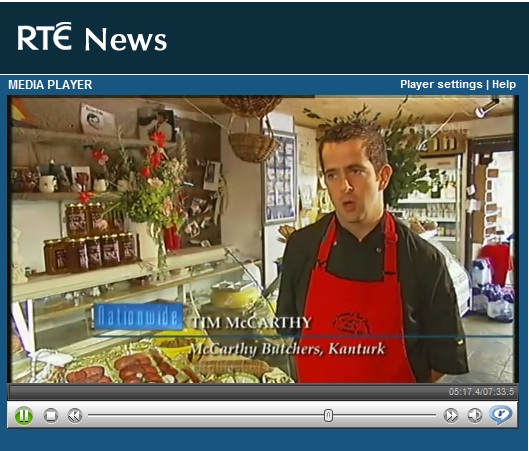
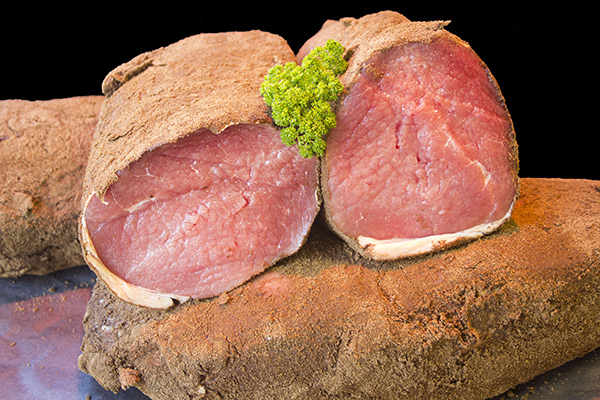 This recipe is from Rozanne’s Recipe Corner on the Pat Kenny Show. As well as being a regular guest on the Pat Kenny show Rozanne Stevens writes a column in The Health and Living Supplement of the Irish independent and she has been Head Tutor in Cooks Academy in Dun Laoghaire over the last 4 years.
This recipe is from Rozanne’s Recipe Corner on the Pat Kenny Show. As well as being a regular guest on the Pat Kenny show Rozanne Stevens writes a column in The Health and Living Supplement of the Irish independent and she has been Head Tutor in Cooks Academy in Dun Laoghaire over the last 4 years.